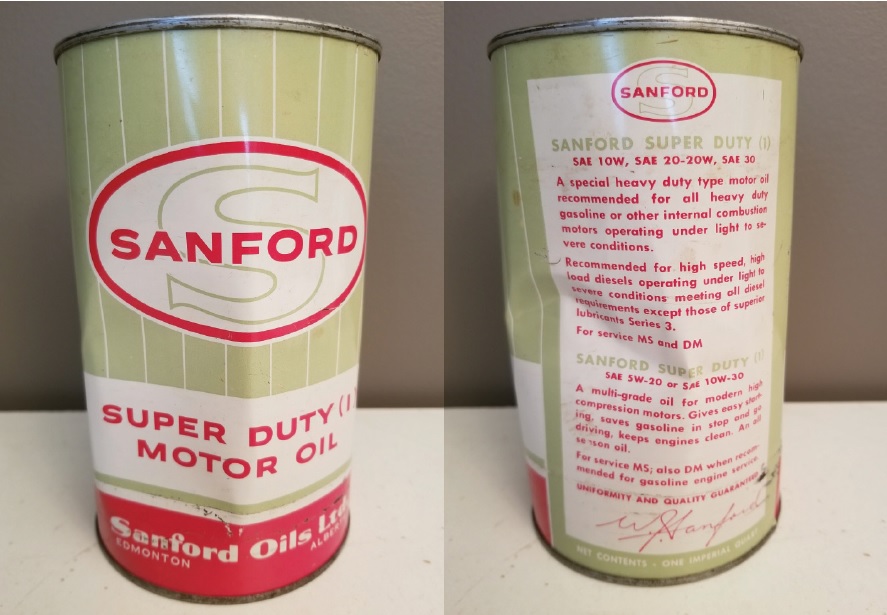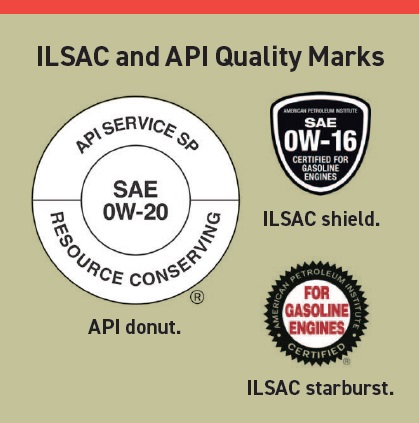Making the transition to ILSAC GF-6
Paul Hetherington | TLT President's Report August 2020
Things have changed with oil specifications since my teenage years.

My roots in lubrication started at an early age, as a relative of mine owned a small oil company called Sanford Oil in Edmonton, Alberta, Canada. Photos courtesy of Tom Hetherington.
I started my formal working career at the age of 16 at a large national automotive hardware and sporting goods store, working part time while going to high school. One of my first responsibilities was maintaining and stocking the shelves in the automotive section of the store and, in particular, the old engine oil cans.
I remember sometimes looking closely at the cans and wondering what the technical information that was written on them meant—it was all just confusing to me. Little did I know at that young age that my career would later take me deep into the world of lubrication and eventually onto my involvement with an organization like STLE.
Although I started in the industry as a teenager, my roots in lubrication go back even farther than that, as a relative of mine owned a small oil company in Edmonton, Alberta, Canada, called Sanford Oil (my mother’s family). Unfortunately, I don’t really know much about what happened to the company and those relatives I never met, although my family somehow did acquire an oil can from the late 1950s or early 1960s. It reminds me today of how things have changed with oil specifications over the history of engine oil lubricants. While it might be nice to reminisce about the past, I would rather talk about the exciting things that are currently happening in the gasoline engine oil industry and, more specifically, the new ILSAC GF-6 and API SP specifications, which were launched in May.
Why has ILSAC GF-6 been introduced? As an industry, we’ve been anticipating the launch of GF-6 for over a year—and now it’s here. A step-change in passenger car lubricant innovation, the new category has been significantly influenced by the U.S. Environmental Protection Agency’s new emissions and fuel economy legislation.
For example, the Clean Air Act outlines the regulations for greenhouse gas emissions. This puts a higher performance load on the lubricant, meaning that OEMs require oils that are more robust. The demise of engine tests we previously used across the industry also encouraged the move from GF-5 to GF-6.
What is GF-6 going to achieve? Changes in engine design mean that new lubricants need to protect the internal components of engines and, crucially, protect against a new phenomenon known as low-speed pre-ignition (LSPI). LSPI was a key driver behind the development of ILSAC GF-6 lubricants, and so the oils have a unique chemistry developed to prevent LSPI. For vehicle owners with engines suffering from LSPI, simply changing the engine oil to an API SP or ILSAC GF-6 product can prevent severe engine damage and allow the engine to run smoothly.
The latest passenger car lubricant category also is expected to outperform ILSAC GF-5 thanks to its enhanced oxidation control, piston cleanliness (as the engines are running hotter) and fuel economy retention properties, which will contribute to cleaner-burning vehicles.
What does this mean for you? As with all specification changes, the best thing that lubricant professionals dealing directly with customers can do is keep them informed. For example, it’s important to tell them that the new specification includes two subcategories: GF-6A and GF-6B, with GF-6A products being fully backward compatible and, therefore, suitable for vehicles where GF-5 lubricants were used, whereas GF-6B oils should only be used for engines designed for this subcategory. This can be an area of confusion as non-specialists might assume that all GF-6 engine oils are the same. We should never forget that the correct lubricant is used based on the OEM recommendation, as using the wrong specification engine oil could compromise engine performance and its wear protection.
To help customers identify products, point out the ILSAC and API quality marks (starburst or shield and/or API donut) on the label, which show the subcategory the product complies with. A number of OEMs require these marks to cover warranty requirements, and it’s their guarantee the oil has been suitably tested to be fit for purpose for today’s modern and legacy engines—something of particular importance for technicians.

With ILSAC GF-6 lubricants now readily available, the transition from GF-5 has begun, and in May 2021, the previous category will no longer be sold. It’s therefore essential for lubricant professionals to ensure they’re aware of GF-6 and how it will affect their customers.
Paul Hetherington is manager technical services for Petro-Canada Lubricants in Peachland, British Columbia, Canada. You can reach him at paul.hetherington@petrocanadalsp.com.